The Effects of Compressibility on the Performance and Modal Structures of a Sweeping Jet Emitted from Various Scales of a Fluidic Oscillator
Abstract
:1. Introduction
2. Materials and Methods
2.1. Fluidic Oscillators and Flow Parameters
2.2. Schlieren Imaging Setup
2.3. Oscillation Frequency, Oscillation Angle, and Jet Velocity Analysis
2.4. Modal Analysis
3. Results
3.1. Oscillation Frequencies
3.2. Oscillation Angles
3.3. Angular Velocities
3.4. Velocity Ratios
3.5. Modal Analysis
4. Discussion
Author Contributions
Funding
Institutional Review Board Statement
Informed Consent Statement
Data Availability Statement
Acknowledgments
Conflicts of Interest
References
- Tritton, D.J. Physical Fluid Dynamics; Springer Science & Business Media: Berlin/Heidelberg, Germany, 2012. [Google Scholar]
- Bauer, P. Oscillator and Shower Head for Use Therewith. U.S. Patent 3563462, 16 February 1971. [Google Scholar]
- Hossain, M.A.; Ameri, A.; Gregory, J.W.; Bons, J. Effects of Fluidic Oscillator Nozzle Angle on the Flowfield and Impingement Heat Transfer. AIAA J. 2021, 59, 2113–2125. [Google Scholar] [CrossRef]
- Melton, L.P.; Koklu, M.; Andino, M.; Lin, J.C.; Edelman, L.M. Sweeping jet optimization studies. In Proceedings of the 8th AIAA Flow Control Conference, Washington, DC, USA, 13–17 June 2016; p. 4233. [Google Scholar]
- Hossain, M.A.; Asar, M.E.; Gregory, J.W.; Bons, J.P. Experimental Investigation of Sweeping Jet Film Cooling in a Transonic Turbine Cascade. J. Turbomach. 2020, 142, 041009. [Google Scholar] [CrossRef]
- Liebsch, J.; Paschereit, C.O. Oscillating Wall Jets for Active Flow Control in a Laboratory Fume Hood—Experimental Investigations. Fluids 2021, 6, 279. [Google Scholar] [CrossRef]
- Xia, L.; Hua, Y.; Zheng, J. Numerical investigation of flow separation control over an airfoil using fluidic oscillator. Phys. Fluids 2021, 33, 065107. [Google Scholar] [CrossRef]
- Koklu, M. Performance Assessment of Fluidic Oscillators Tested on the NASA Hump Model. Fluids 2021, 6, 74. [Google Scholar] [CrossRef]
- Seele, R.; Tewes, P.; Woszidlo, R.; McVeigh, M.A.; Lucas, N.J.; Wygnanski, I.J. Discrete sweeping jets as tools for improving the performance of the V-22. J. Aircr. 2009, 46, 2098–2106. [Google Scholar] [CrossRef]
- Tewes, P.; Taubert, L.; Wygnanski, I. On the use of sweeping jets to augment the lift of a lambda-wing. In Proceedings of the 28th AIAA Applied Aerodynamics Conference, Chicago, IL, USA, 28 June–1 July 2010; p. 4689. [Google Scholar]
- Kim, S.-H.; Kim, K.-Y. Effects of installation location of fluidic oscillators on aerodynamic performance of an airfoil. Aerosp. Sci. Technol. 2020, 99, 105735. [Google Scholar] [CrossRef]
- Portillo, D.J.; Hoffman, E.N.; Garcia, M.; LaLonde, E.; Hernandez, E.; Combs, C.S.; Hood, L. Modal Analysis of a Sweeping Jet Emitted by a Fluidic Oscillator. In Proceedings of the AIAA Aviation 2021 Forum, Virtual Event, 2–6 August 2021; p. 2835. [Google Scholar]
- Gosen, F.V.; Ostermann, F.; Woszidlo, R.; Nayeri, C.N.; Paschereit, C.O. Experimental investigation of compressibility effects in a fluidic oscillator. In Proceedings of the 53rd AIAA Aerospace Sciences Meeting, Kissimmee, FL, USA, 5–9 January 2015; p. 11. [Google Scholar]
- Oz, F.; Kara, K. Jet Oscillation Frequency Characterization of a Sweeping Jet Actuator. Fluids 2020, 5, 72. [Google Scholar] [CrossRef]
- Park, S.; Ko, H.; Kang, M.; Lee, Y. Characteristics of a Supersonic Fluidic Oscillator Using Design of Experiment. AIAA J. 2020, 58, 2784–2789. [Google Scholar] [CrossRef]
- Bray, H.C., Jr. Cold Weather Fluidic Fan Spray Devices and Method. U.S. Patent 4,463,904, 7 August 1984. [Google Scholar]
- Settles, G.S. Schlieren and Shadowgraph Techniques: Visualizing Phenomena in Transparent Media; Springer Science & Business Media: Berlin/Heidelberg, Germany, 2001. [Google Scholar]
- Bohan, B.T.; Polanka, M.D. The Effect of Scale and Working Fluid on Sweeping Jet Frequency and Oscillation Angle. J. Fluids Eng. 2020, 142, 061206. [Google Scholar] [CrossRef]
- Hirsch, D.; Gharib, M. Schlieren visualization and analysis of sweeping jet actuator dynamics. AIAA J. 2018, 56, 2947–2960. [Google Scholar] [CrossRef]
- Taira, K.; Brunton, S.L.; Dawson, S.T.; Rowley, C.W.; Colonius, T.; McKeon, B.J.; Schmidt, O.T.; Gordeyev, S.; Theofilis, V.; Ukeiley, L.S. Modal analysis of fluid flows: An overview. AIAA J. 2017, 55, 4013–4041. [Google Scholar] [CrossRef] [Green Version]
- Towne, A.; Schmidt, O.T.; Colonius, T. Spectral proper orthogonal decomposition and its relationship to dynamic mode decomposition and resolvent analysis. J. Fluid Mech. 2017, 847, 821–867. [Google Scholar] [CrossRef] [Green Version]
- Schmidt, O.T.; Colonius, T. Guide to spectral proper orthogonal decomposition. AIAA J. 2020, 58, 1023–1033. [Google Scholar] [CrossRef]
- Lumley, J.L. The structure of inhomogeneous turbulent flows. Atmos. Turbul. Radio Wave Propag. 1967, 166–178. [Google Scholar]
- Schmid, P.J. Dynamic mode decomposition of numerical and experimental data. J. Fluid Mech. 2010, 656, 5–28. [Google Scholar] [CrossRef] [Green Version]
- Glauser, M.N.; Leib, S.J.; George, W.K. Coherent structures in the axisymmetric turbulent jet mixing layer. In Turbulent Shear Flows 5; Springer: Berlin/Heidelberg, Germany, 1987; pp. 134–145. [Google Scholar]
- Sinha, A.; Rodríguez, D.; Brès, G.A.; Colonius, T. Wavepacket models for supersonic jet noise. J. Fluid Mech. 2014, 742, 71–95. [Google Scholar] [CrossRef] [Green Version]
- Schmidt, O.T.; Towne, A.; Rigas, G.; Colonius, T.; Brès, G.A. Spectral analysis of jet turbulence. J. Fluid Mech. 2018, 855, 953–982. [Google Scholar] [CrossRef] [Green Version]
- Cottier, S.; Combs, C.S.; Vanstone, L. Spectral Proper Orthogonal Decomposition Analysis of Shock-Wave/Boundary-Layer Interactions. In Proceedings of the AIAA Aviation 2019 Forum, Dallas, TX, USA, 17–21 June 2019; p. 3331. [Google Scholar]
- Hoffman, E.N.; Rodriguez, J.M.; Cottier, S.M.; Combs, C.S.; Bathel, B.F.; Weisberger, J.M.; Jones, S.B.; Schmisseur, J.D.; Kreth, P.A. Modal Analysis of Cylinder-Induced Transitional Shock-Wave/Boundary-Layer Interaction Unsteadiness. AIAA J. 2022, 60, 2730–2748. [Google Scholar] [CrossRef]
- Bohan, B.T.; Polanka, M.D.; Rutledge, J.L. Sweeping jets issuing from the face of a backward-facing step. J. Fluids Eng. 2019, 141, 121201. [Google Scholar] [CrossRef]
- Hossain, M.A.; Ameri, A.; Gregory, J.W.; Bons, J.P. Sweeping jet impingement heat transfer on a simulated turbine vane leading edge. J. Glob. Power Propuls. Soc. 2018, 2, 402–414. [Google Scholar] [CrossRef]
- Ostermann, F.; Woszidlo, R.; Nayeri, C.; Paschereit, C.O. Effect of velocity ratio on the flow field of a spatially oscillating jet in crossflow. In Proceedings of the 55th AIAA Aerospace Sciences Meeting, Grapevine, TX, USA, 9–13 January 2017; p. 0769. [Google Scholar]
- Tomac, M.N.; Gregory, J.W. Phase-synchronized fluidic oscillator pair. AIAA J. 2019, 57, 670–681. [Google Scholar] [CrossRef]
- Koklu, M. Effects of sweeping jet actuator parameters on flow separation control. AIAA J. 2018, 56, 100–110. [Google Scholar] [CrossRef] [PubMed]
- Bobusch, B.B.; Woszidlo, R.; Kruger, O.; Paschereit, C.O. Numerical investigations on geometric parameters affecting the oscillation properties of a fluidic oscillator. In Proceedings of the 21st AIAA Computation Fluid Dynamics Conference, San Diego, CA, USA, 24–27 June 2013. [Google Scholar]
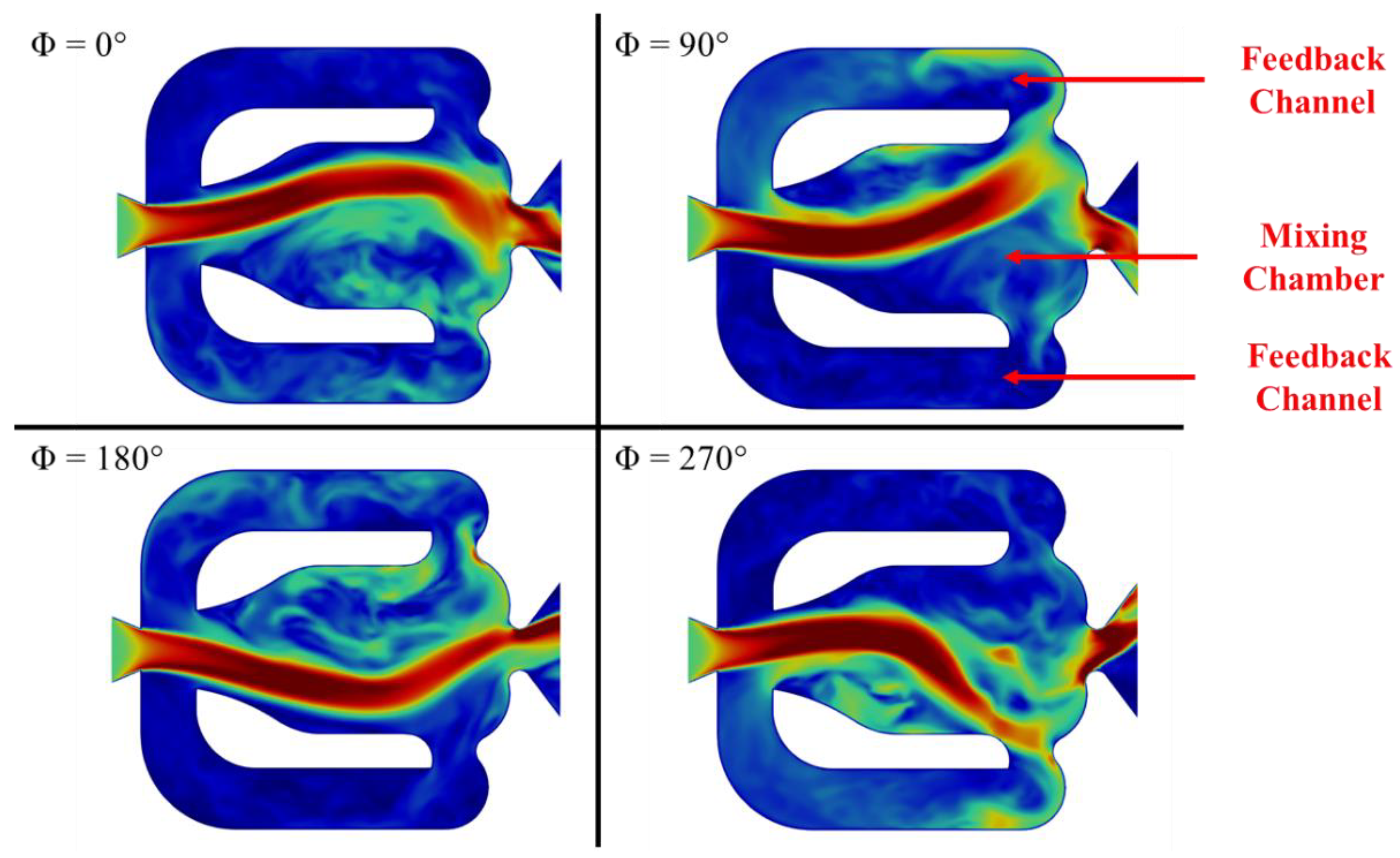
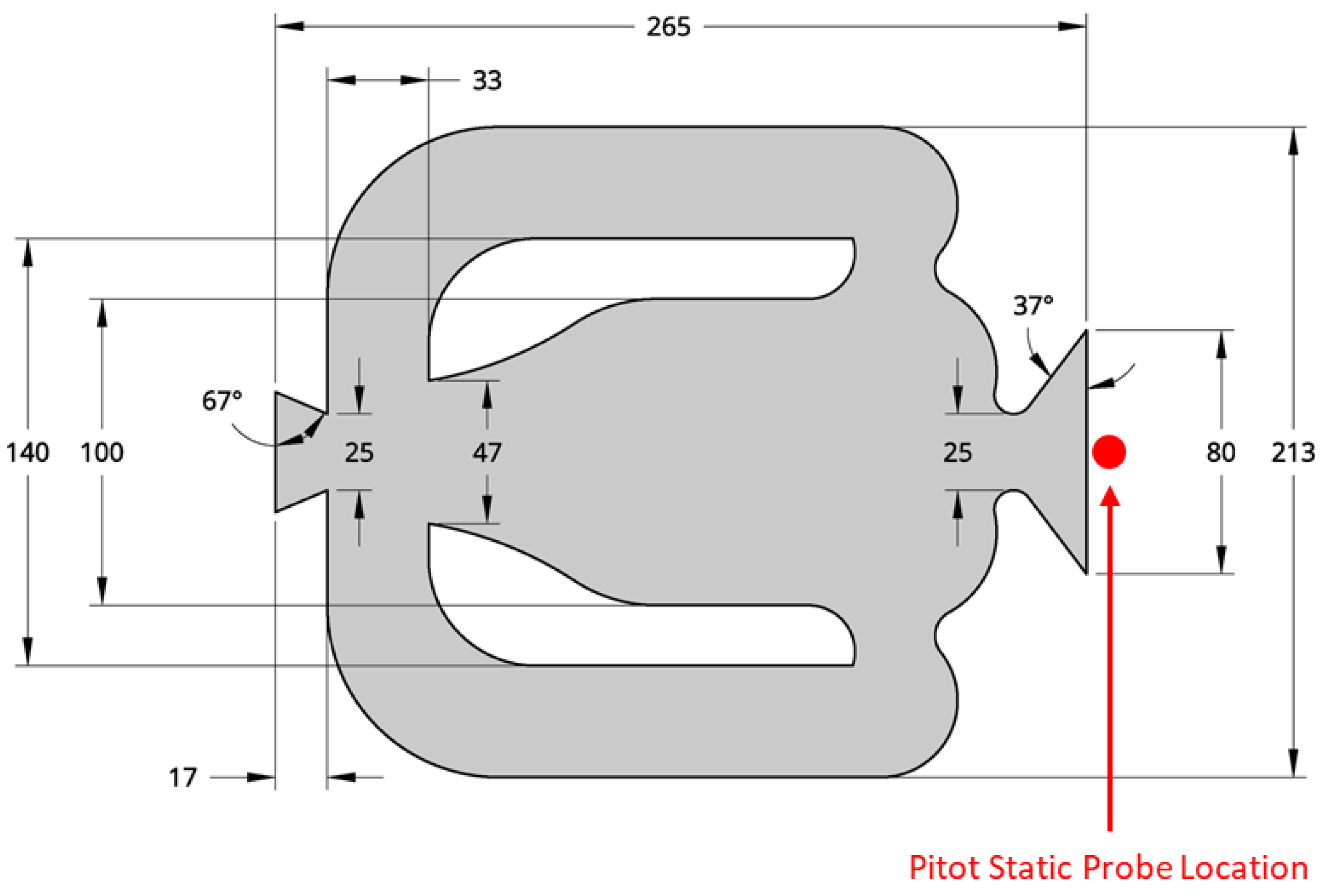

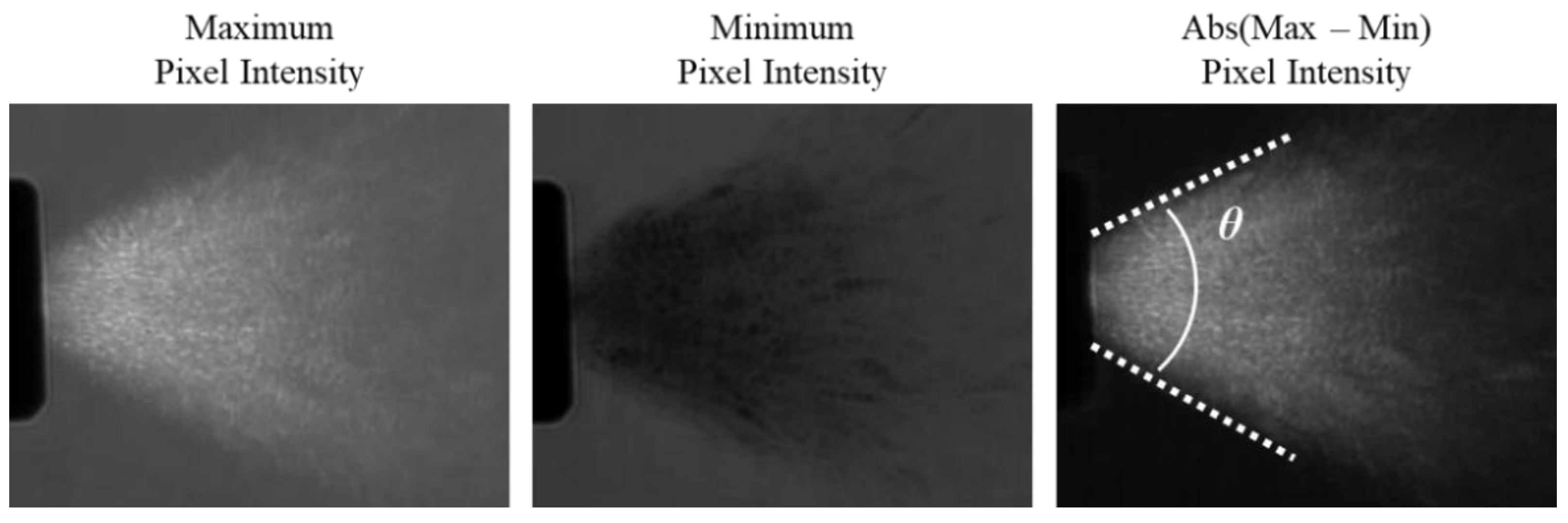
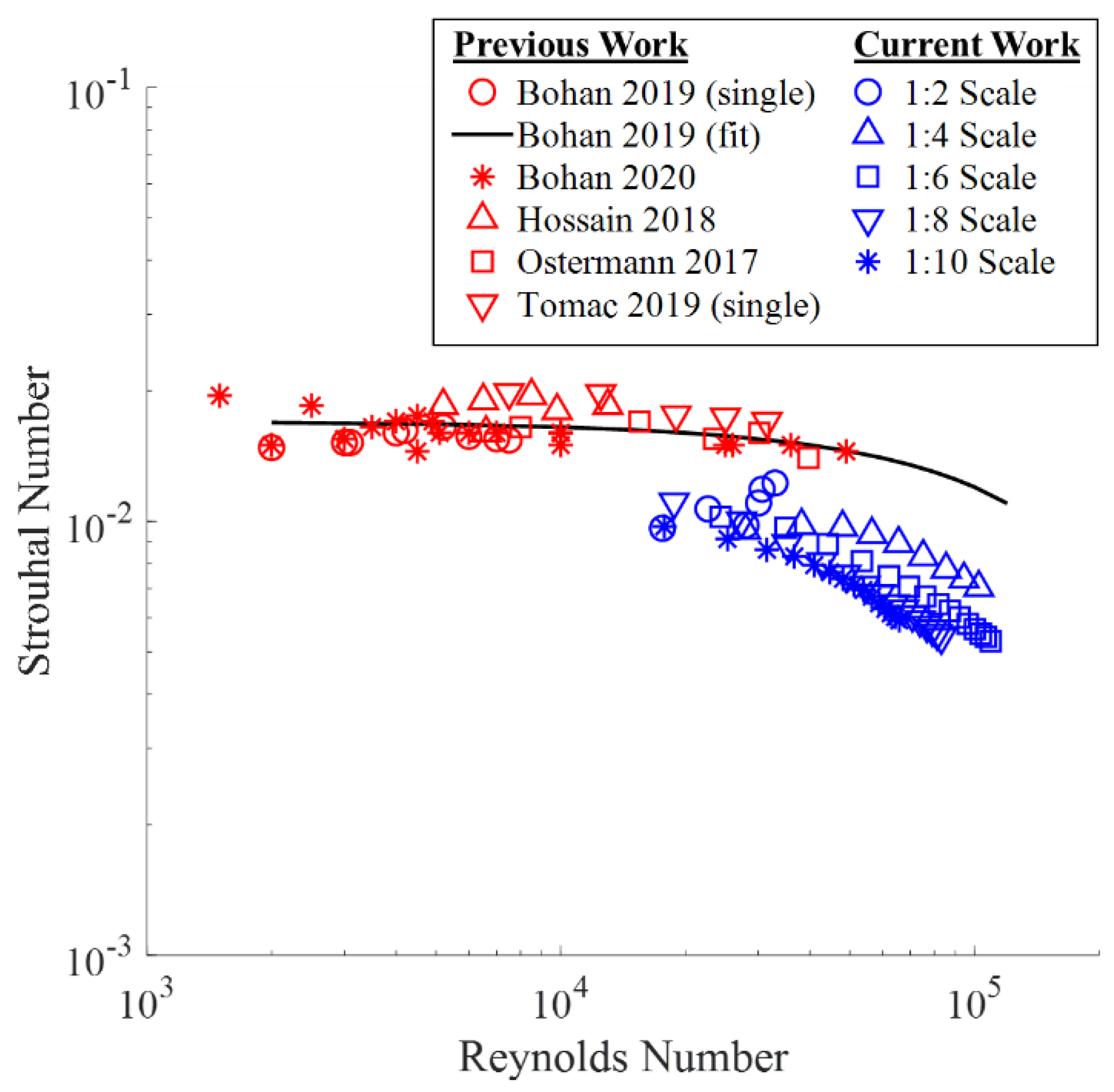

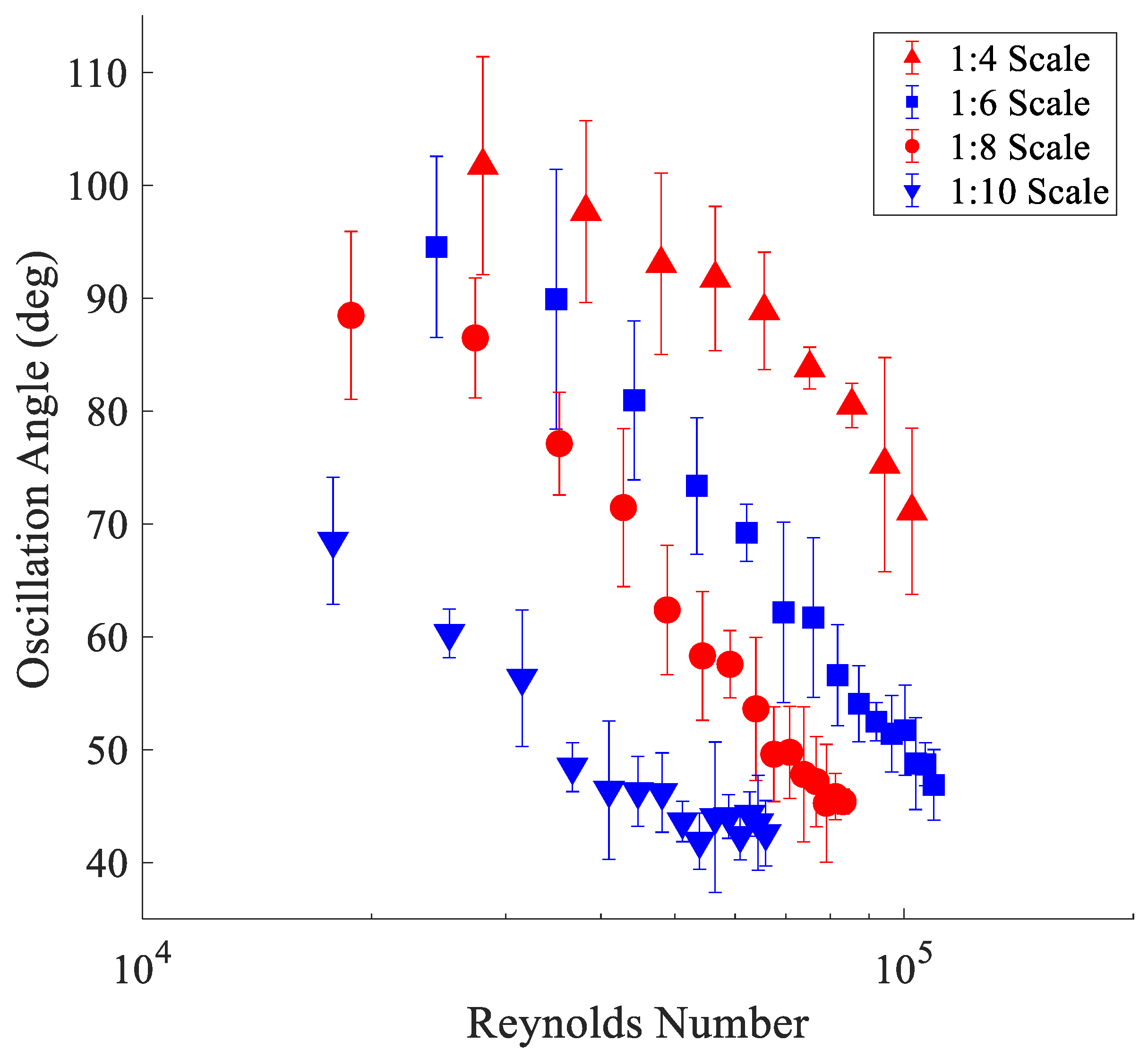
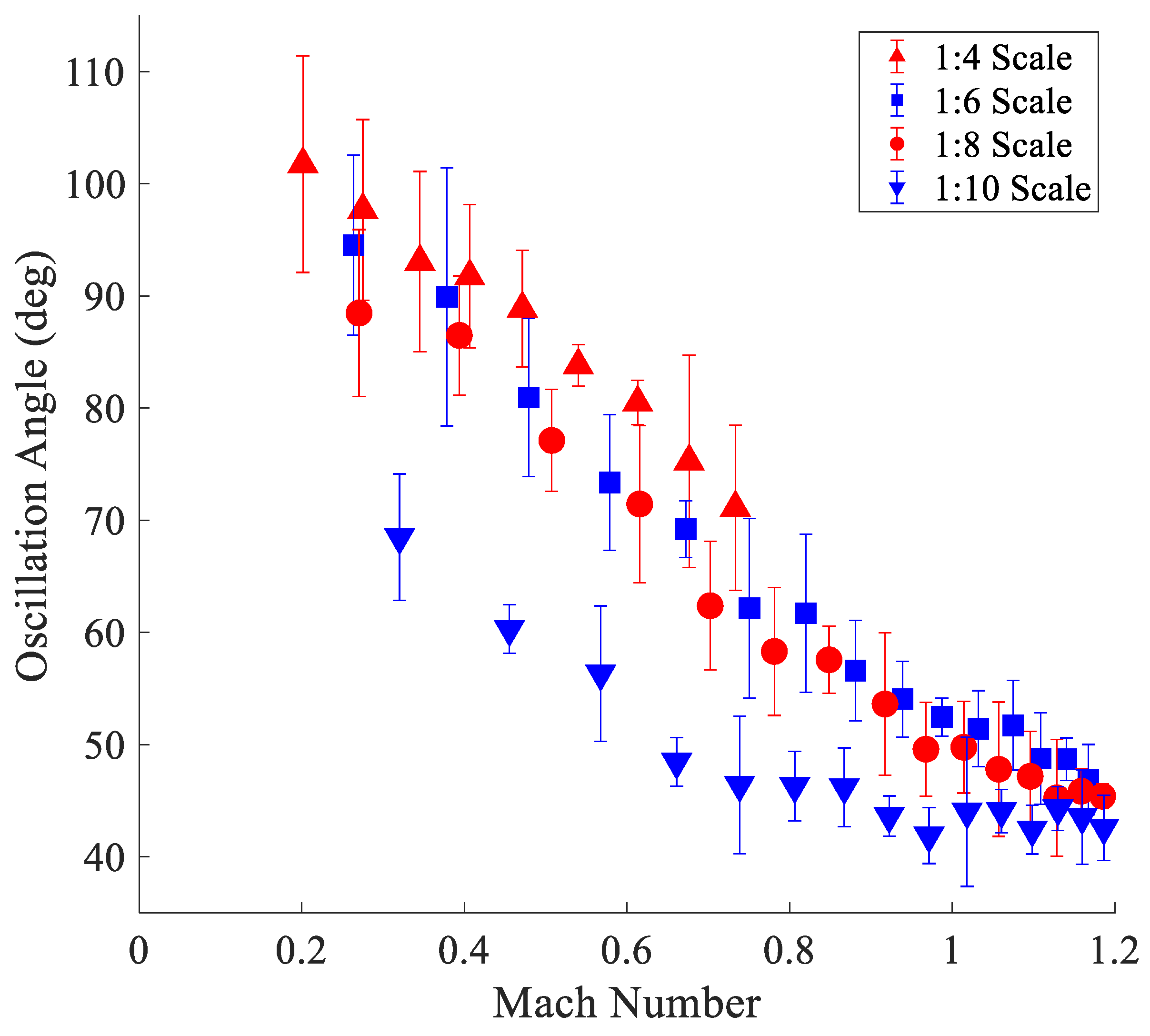
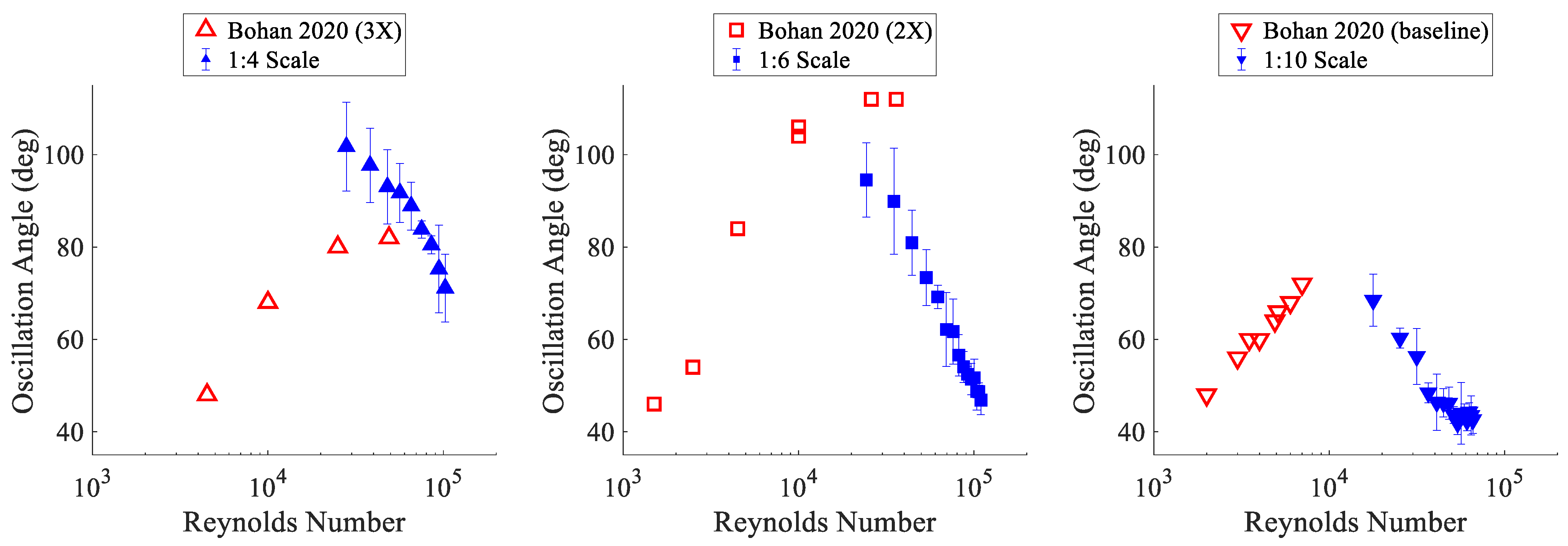
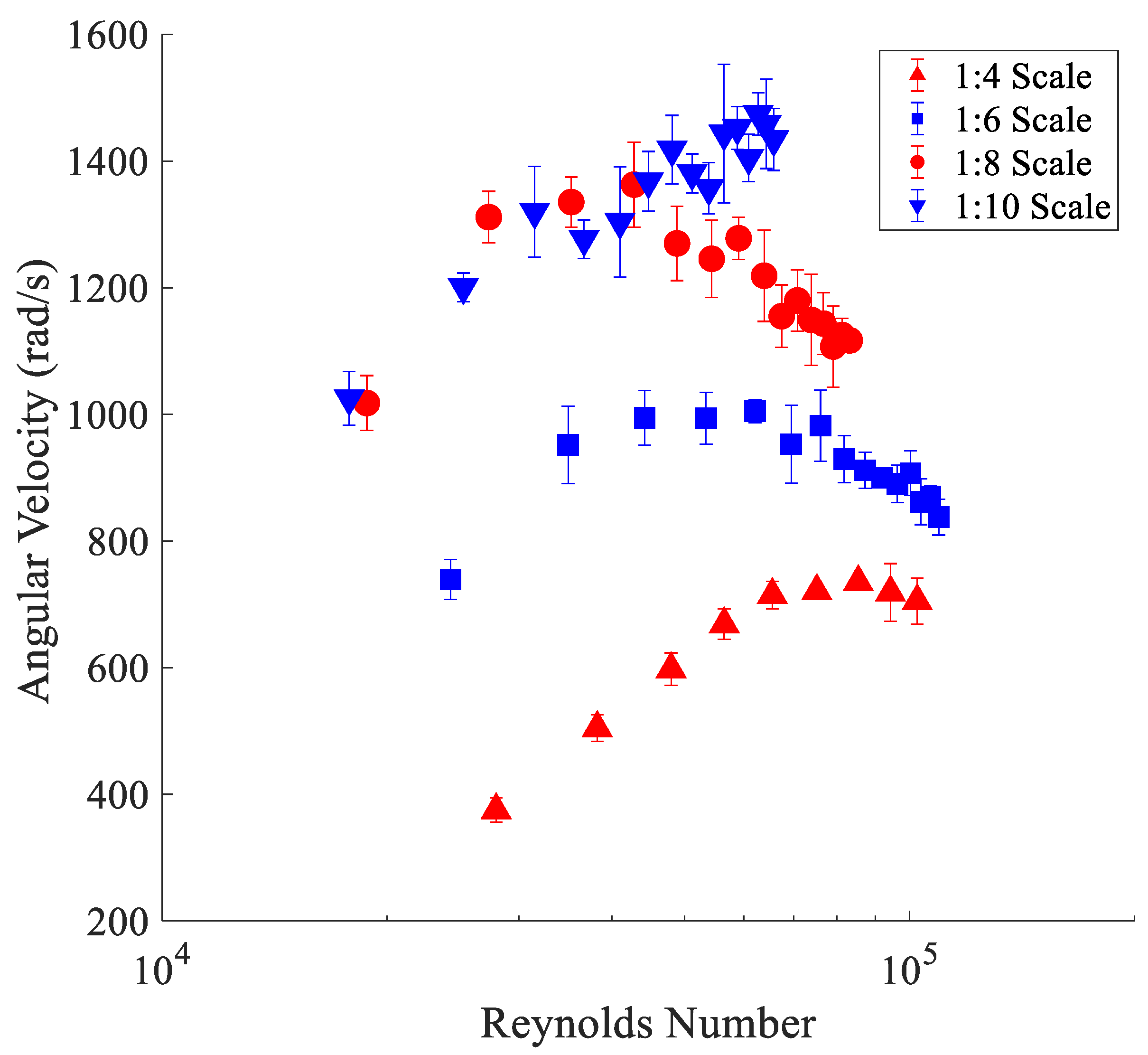
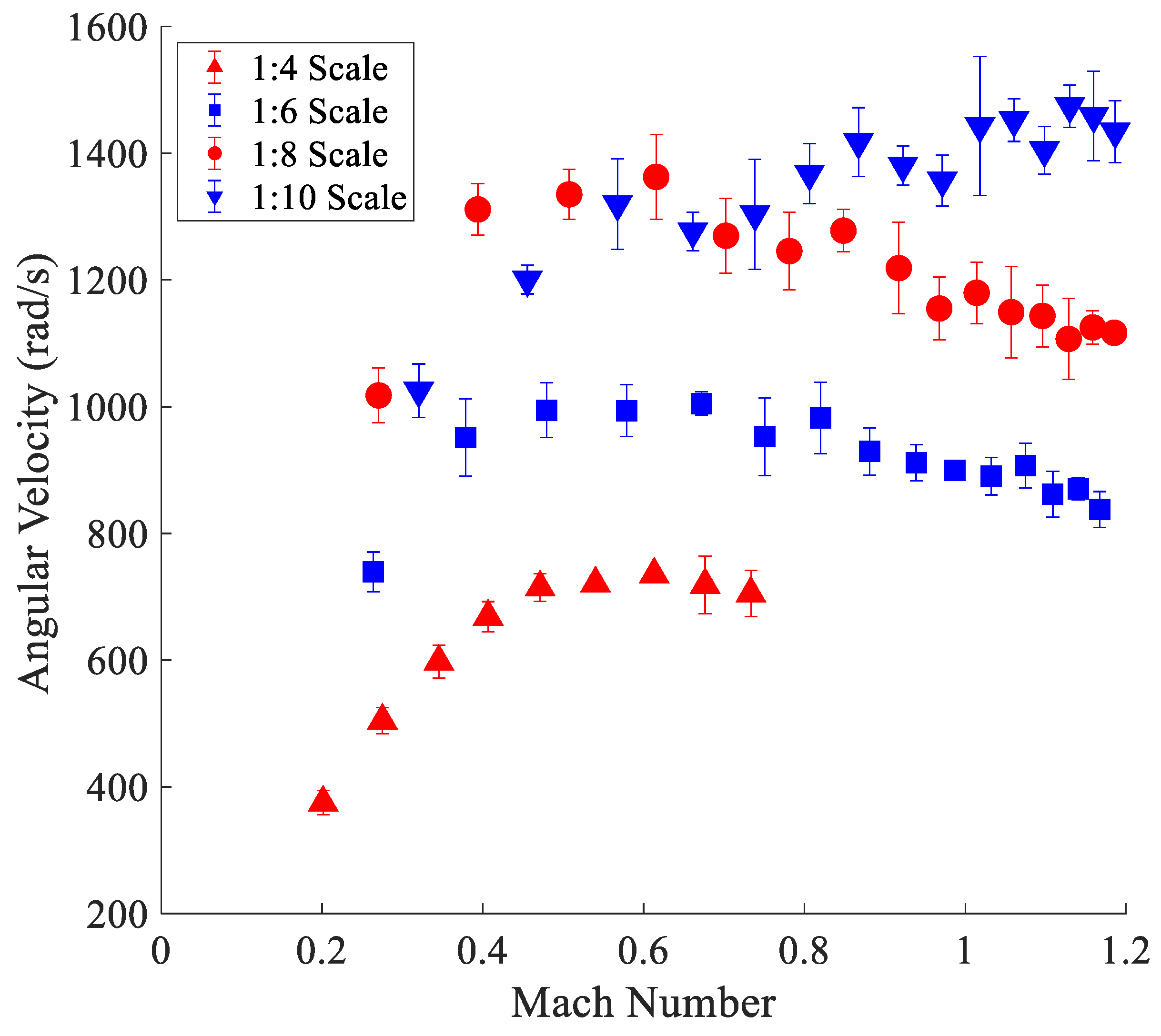
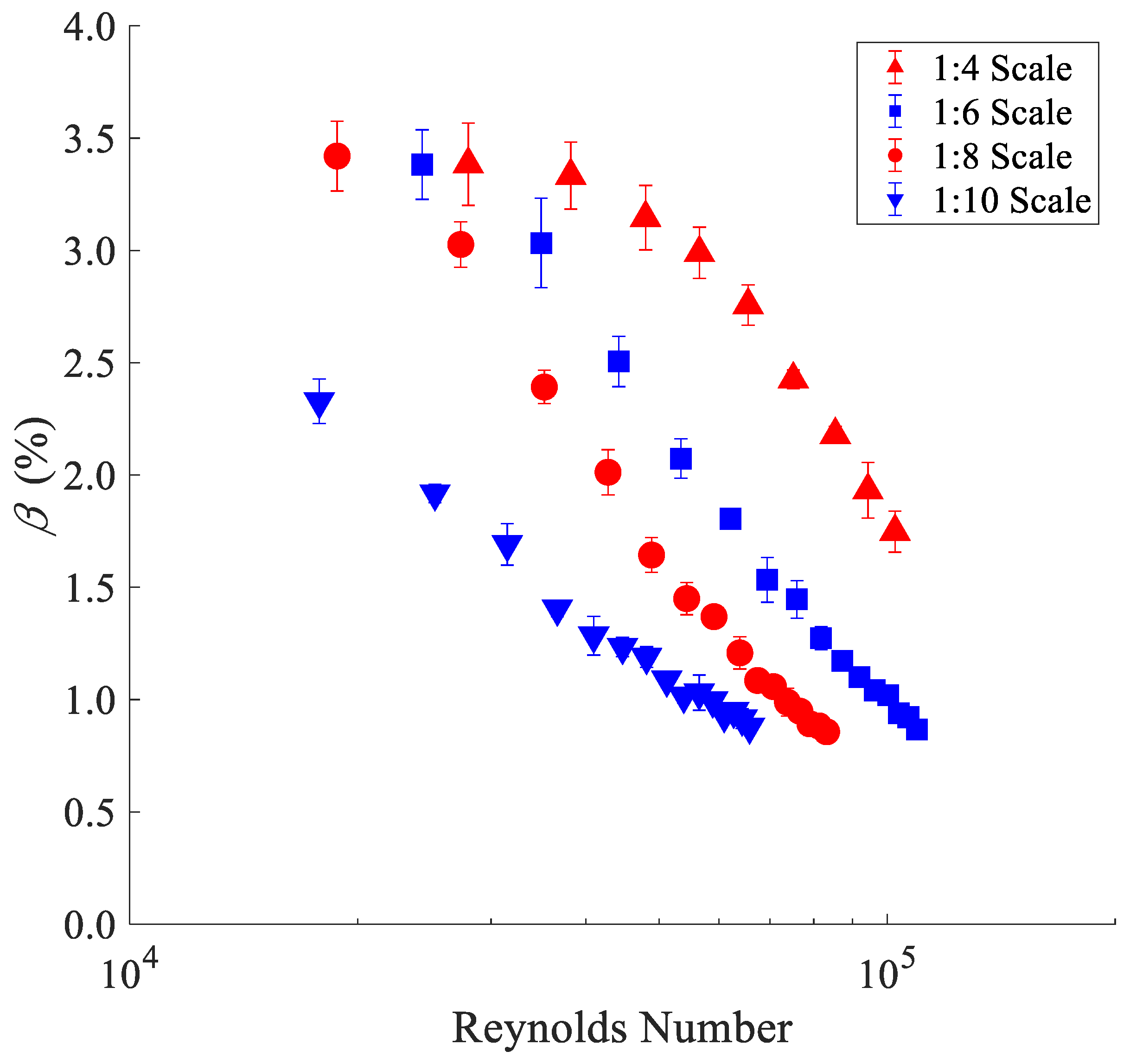
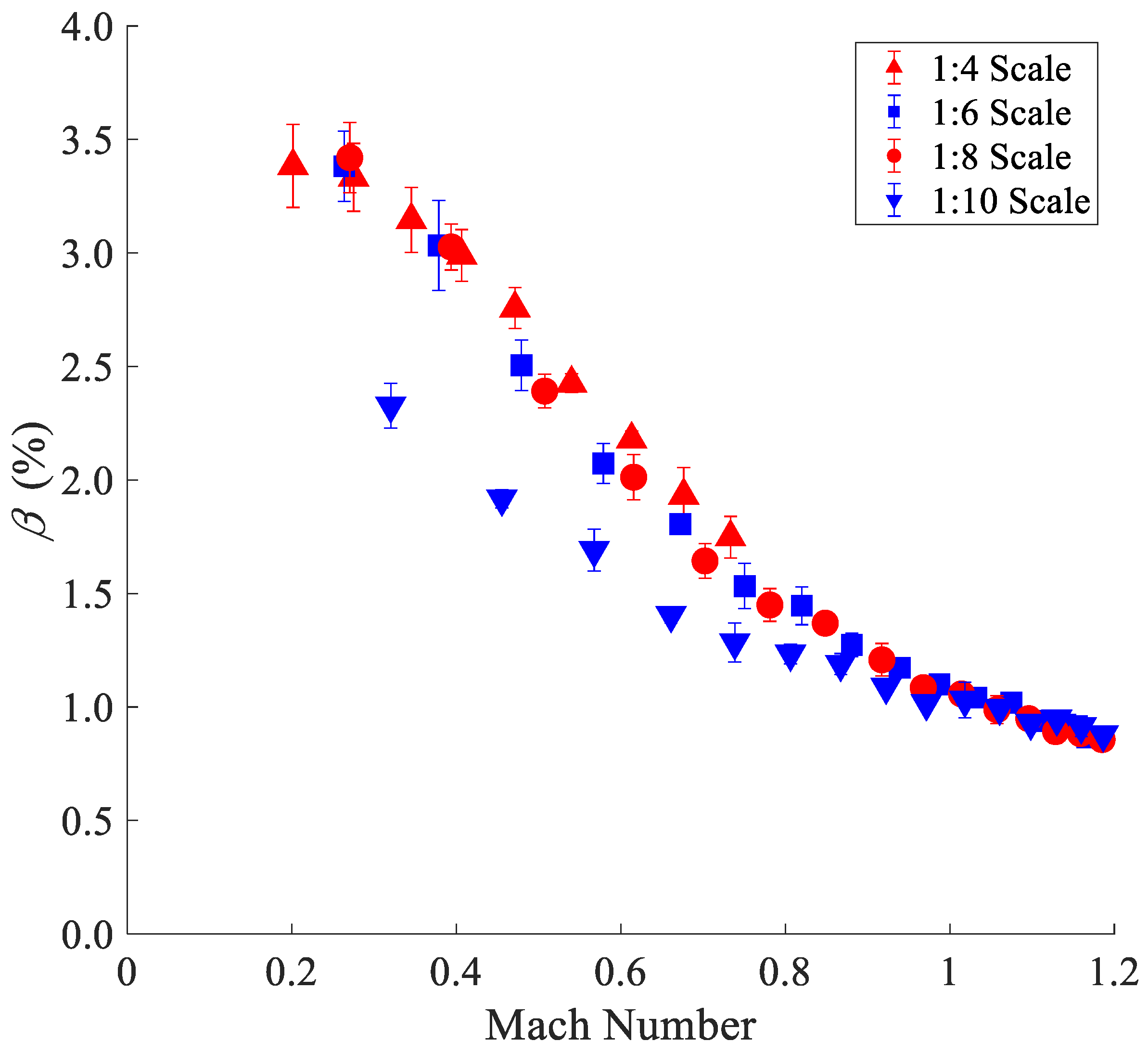

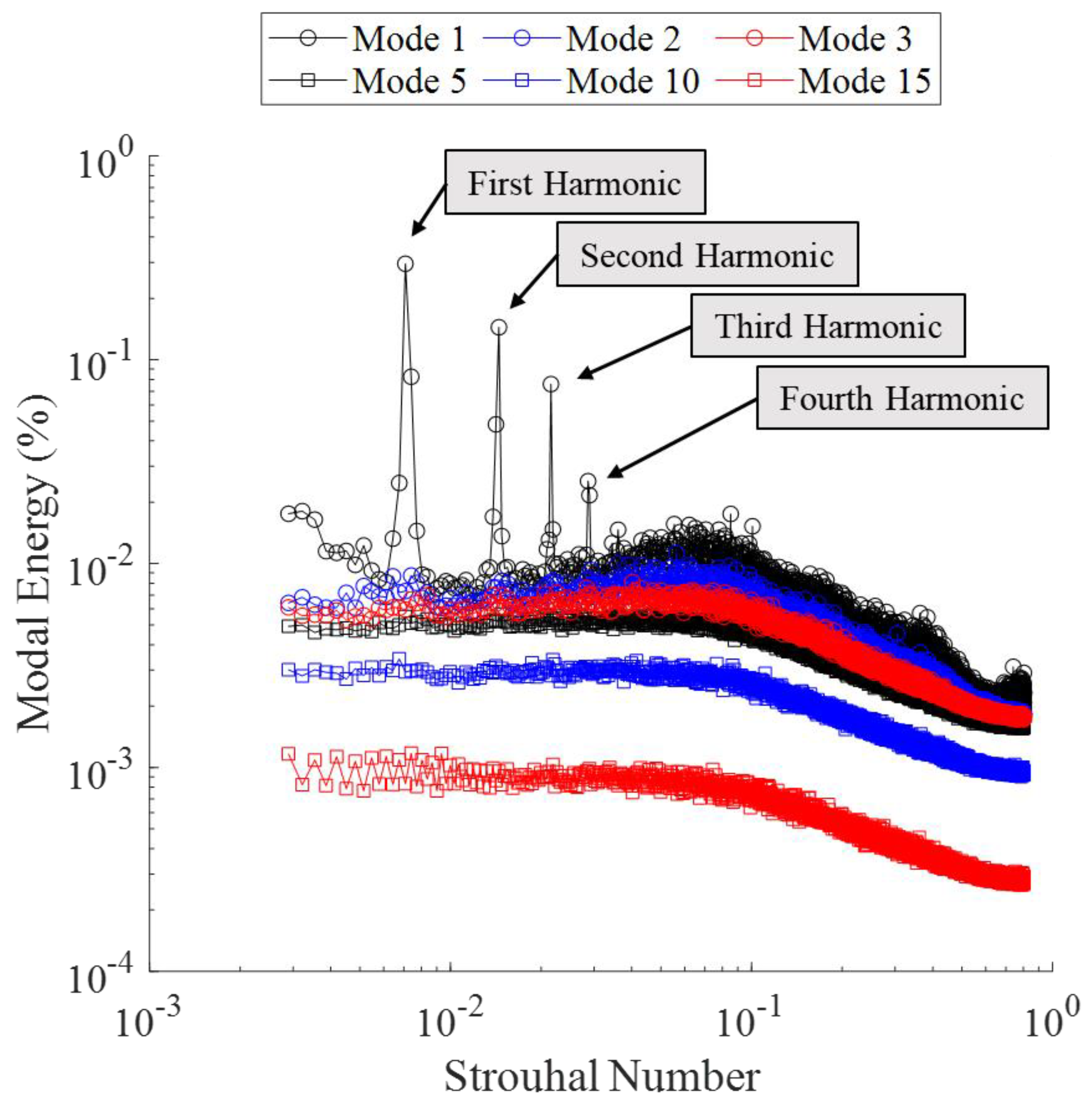
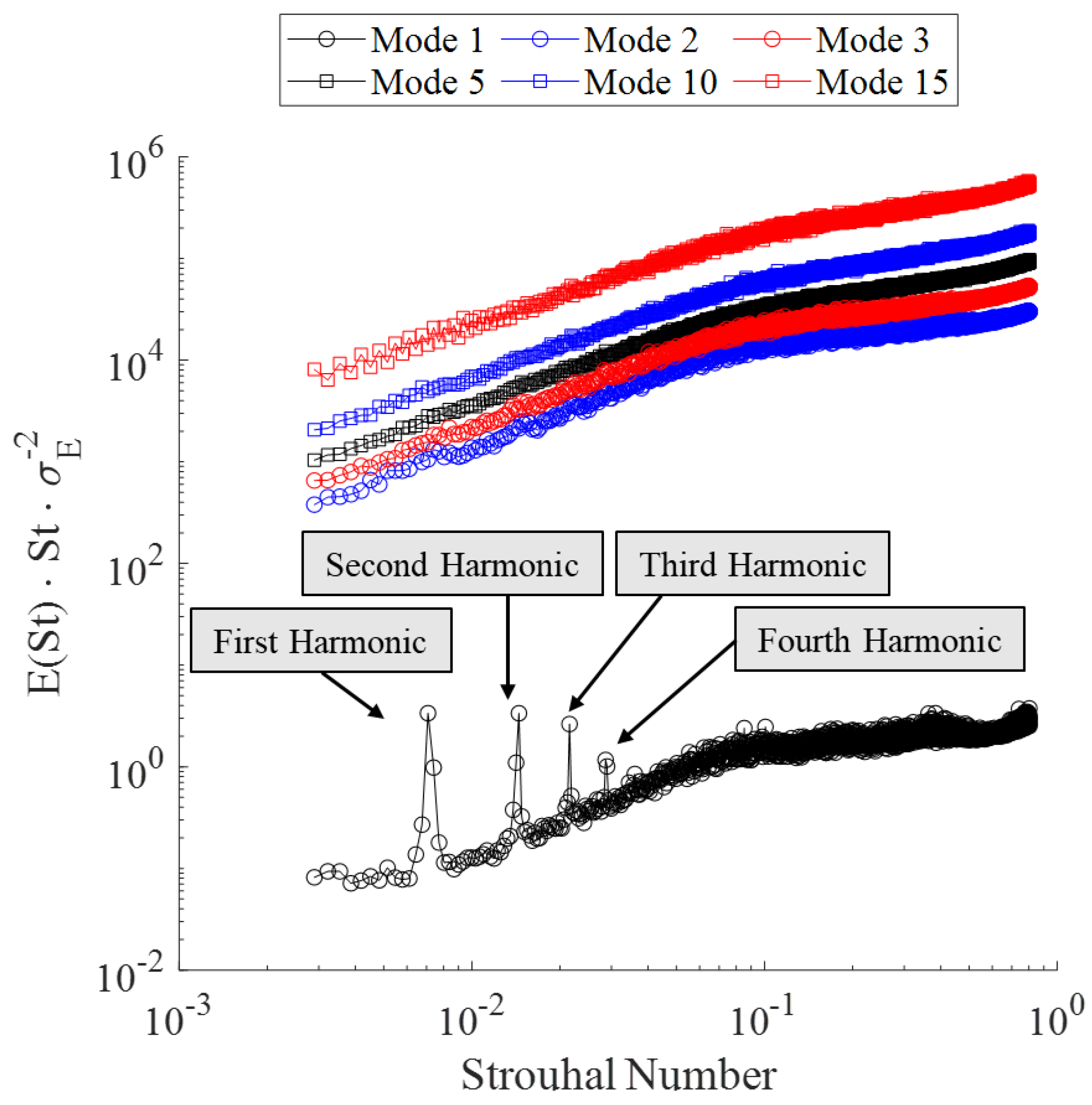
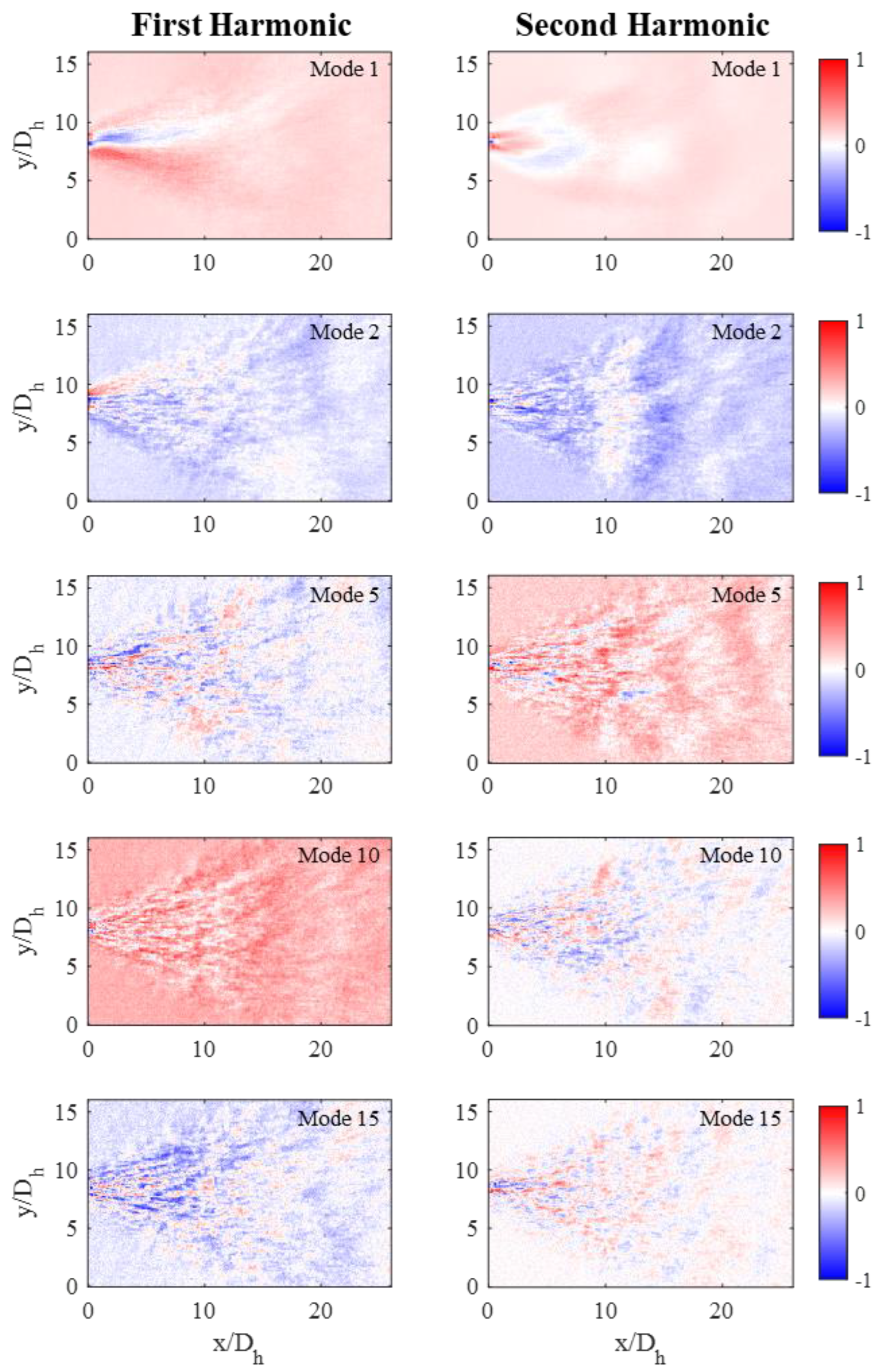
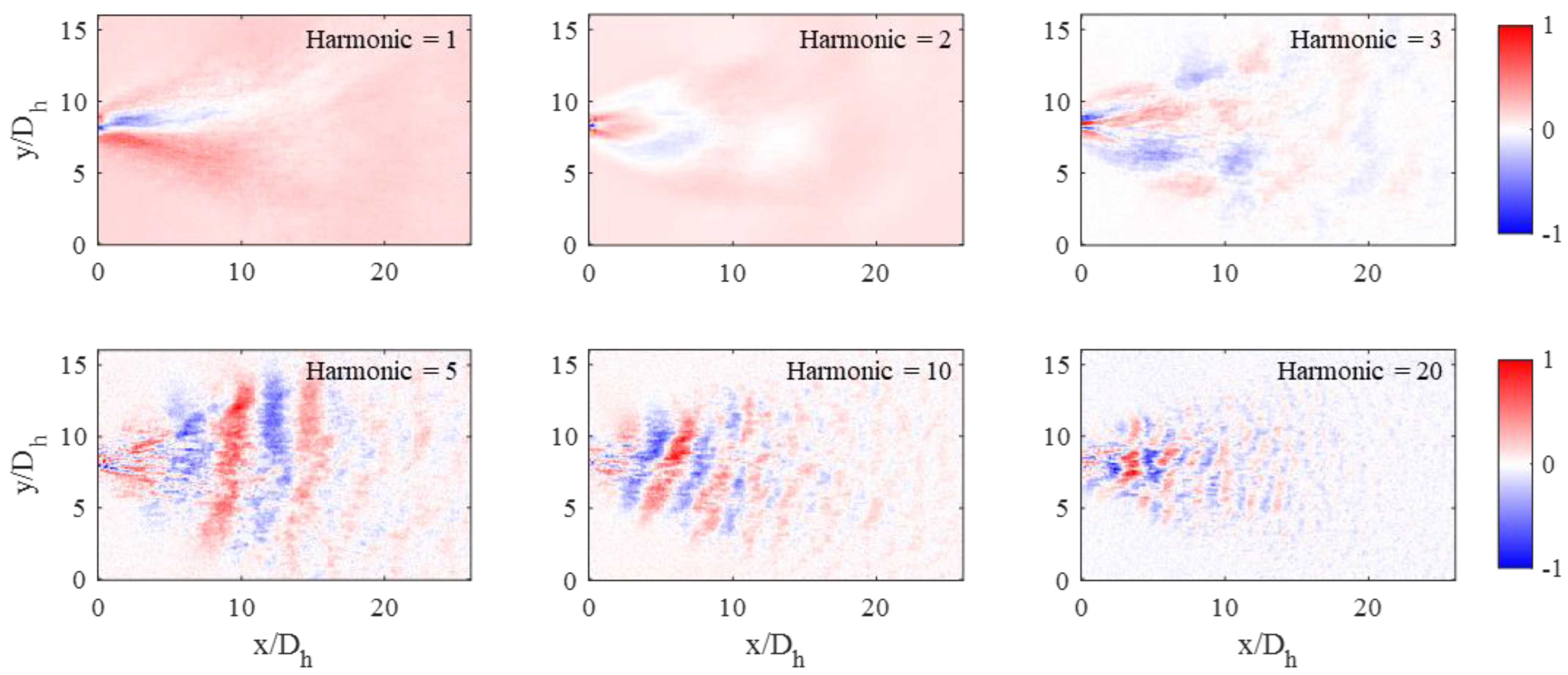
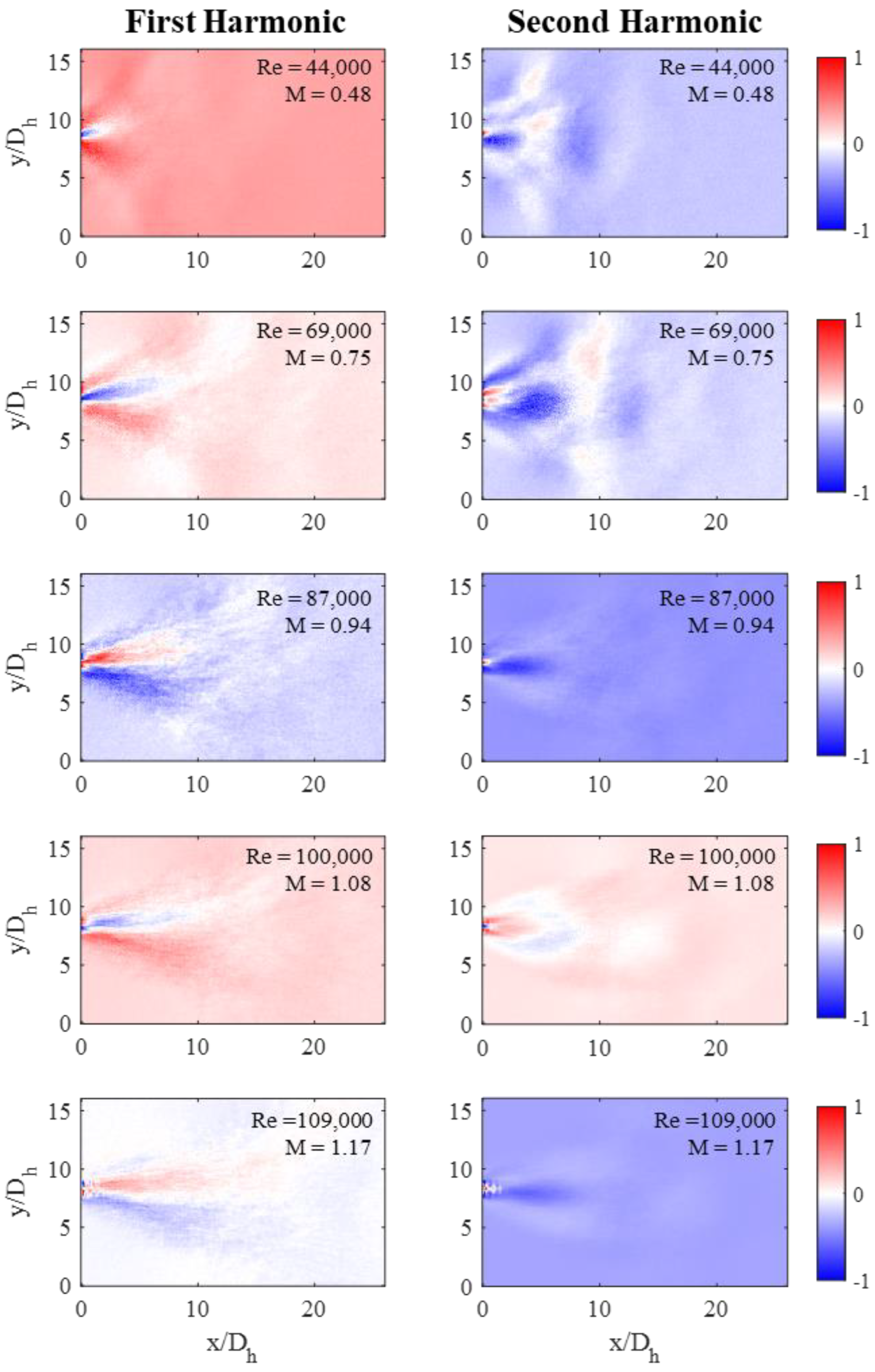
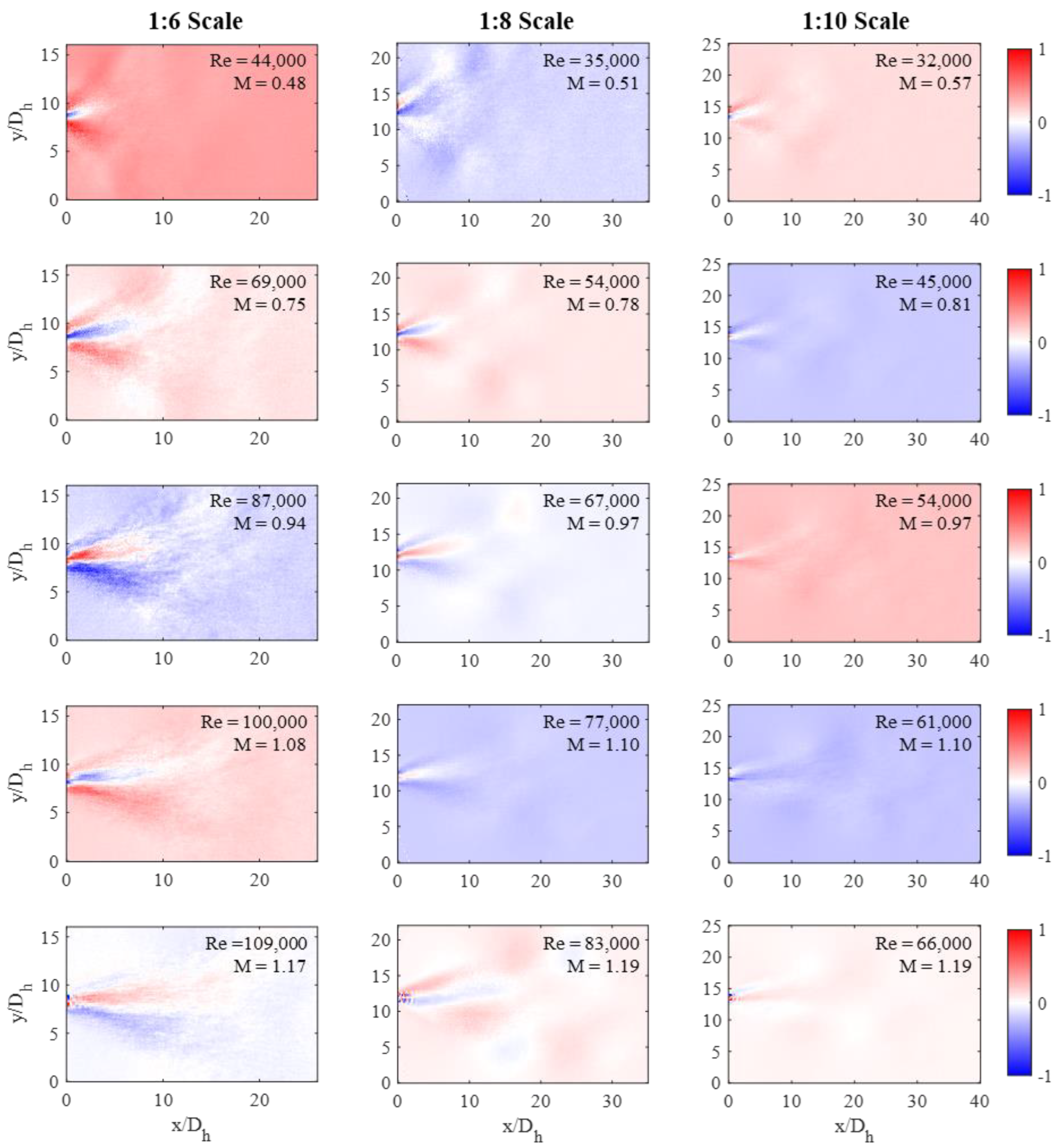
| Scale | Air Inlet Pressure Range |
|---|---|
| 1:2 | 115–184 kPa |
| 1:4 | 115–225 kPa |
| 1:6 | 115–308 kPa |
| 1:8 | 115–308 kPa |
| 1:10 | 115–308 kPa |
| Variable | Average Uncertainty | Average Contribution to Measured Variable |
|---|---|---|
| fosc | 2.4 Hz | 0.5% |
| M | 0.003 | 0.4% |
| P | 42 Pa | 0.1% |
| Po | 246 Pa | 0.2% |
| Re | 1049 | 1.8% |
| St | 0.0002 | 2.0% |
| v | 2.1 m·s−1 | 0.8% |
| β | 0.1% | 4.1% |
| θ | 2.4 deg | 3.9% |
| ρ | 0.016 kg·m−3 | 1.4% |
| ω | 41.7 rad·s−1 | 3.9% |
Publisher’s Note: MDPI stays neutral with regard to jurisdictional claims in published maps and institutional affiliations. |
© 2022 by the authors. Licensee MDPI, Basel, Switzerland. This article is an open access article distributed under the terms and conditions of the Creative Commons Attribution (CC BY) license (https://creativecommons.org/licenses/by/4.0/).
Share and Cite
Portillo, D.J.; Hoffman, E.; Garcia, M.; LaLonde, E.; Combs, C.; Hood, R.L. The Effects of Compressibility on the Performance and Modal Structures of a Sweeping Jet Emitted from Various Scales of a Fluidic Oscillator. Fluids 2022, 7, 251. https://doi.org/10.3390/fluids7070251
Portillo DJ, Hoffman E, Garcia M, LaLonde E, Combs C, Hood RL. The Effects of Compressibility on the Performance and Modal Structures of a Sweeping Jet Emitted from Various Scales of a Fluidic Oscillator. Fluids. 2022; 7(7):251. https://doi.org/10.3390/fluids7070251
Chicago/Turabian StylePortillo, Daniel J., Eugene Hoffman, Matt Garcia, Elijah LaLonde, Christopher Combs, and R. Lyle Hood. 2022. "The Effects of Compressibility on the Performance and Modal Structures of a Sweeping Jet Emitted from Various Scales of a Fluidic Oscillator" Fluids 7, no. 7: 251. https://doi.org/10.3390/fluids7070251
APA StylePortillo, D. J., Hoffman, E., Garcia, M., LaLonde, E., Combs, C., & Hood, R. L. (2022). The Effects of Compressibility on the Performance and Modal Structures of a Sweeping Jet Emitted from Various Scales of a Fluidic Oscillator. Fluids, 7(7), 251. https://doi.org/10.3390/fluids7070251






